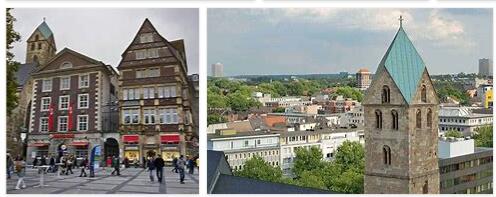Estonia 2019
Yearbook 2019
Estonia. In February, two men, father and son, were sentenced to six and 15 years in prison for spying. The son, who received the longest sentence for treason, is the former officer of the Estonian defense. They had both provided the Russian Federation with military secrets for a decade. The officer had been recruited through extortion of the Russian security service, after visiting a woman in the Russian Federation and then arrested by police accused of rape. See weddinginfashion.com for typical Estonia.
Later in the year, a Russian citizen was sentenced to five years in prison for espionage in Estonia. According to Estonian media, at least 15 people have been arrested in Estonia in recent years on suspicion of conspiracy with Russian intelligence.
Estonia’s Financial Supervisory Authority in February ordered Danske Bank to discontinue its operations in the country. The decision came after an investigation into money laundering at the bank’s office in Tallinn with black money from the Russian Federation and other former Soviet republics. This was described as the largest money laundering in the world. The bank was given eight months to close.
- ABBREVIATIONFINDER.ORG: Click to see the meanings of 3-letter acronym and abbreviation of EST in general and in geography as Estonia in particular.
At the same time, suspicions of money laundering in the multi-billion class in Swedbank in Estonia were revealed with links to Danske Bank. Prosecutors also launched an investigation by Swedbank, and three Estonian executives were allowed to leave the bank. According to an internal report, around € 135 billion of high risk had passed through Swedbank in Estonia, mainly from the bank’s customers in the Russian Federation.
Later in the year, Danske Bank’s former CEO in Estonia was found dead after suspected suicide. He had been interrogated in the investigation of the bank’s money laundering but refused to intervene.
In the March parliamentary elections, the ruling tripartite coalition lost its majority. The Opposition Market Liberal Reform Party won with 34 seats ahead of the ruling and leftist Center Party with 26. Right-wing populist and national conservative Ekre (Estonian Conservative People’s Party) nearly tripled to 19 seats, largely by votes in poor rural areas with unemployment. The coalition parties Fäderneslandet and the Social Democrats went back to 12 and 10 seats respectively.
The leader of the reform party Kaja Kallas wanted to form a coalition with the Center Party, but the center leader and Prime Minister Jüri Ratas instead started talks with Ekre, despite the fact that the Center, before the election, said no to government cooperation with the EU-critical and anti-immigrant party.
Jüri Rata’s turnaround received harsh criticism and was considered to undermine confidence in the political system. Ekre’s controversial party leader Mart Helme fought back against the critics and threatened to trigger street ravages among poor citizens if the Reform Party and the media hampered the negotiations. Despite political differences of opinion, the Center Party, the Ekre and the nationalist Federneslandet agreed on coalition cooperation.
After the Reform Party’s Kaja Kallas was voted down in Parliament, President Kersti Kaljulaid apparently reluctantly gave Jüri Rata’s mission to form a new coalition. She emphasized that every member of the government must respect the constitution and its values. Ratas was approved by Parliament with 55 votes to 44.
The day after the government’s entry, one of Ekre’s ministers must resign. The Foreign Trade Minister was investigated by police on suspicion of domestic violence.
The problems continued and Ratas was forced to repeatedly declare or apologize for the statements made by the Ministers of Economy. In August, the president reported that Finance Minister Martin Helme, deputy party leader in Ekre and son of the party leader, was inappropriate as a minister. Helme had tried to dismiss the country’s police chief, even though he had no power to do so.
The Reform Party demanded a vote of no confidence in Parliament against Prime Minister Ratas, but it was supported by a majority. By the end of the year, Ratas had been forced to replace another two of Ekre’s ministers.
Ekre said no to refugees under the EU’s quota system. At an EU meeting in October, Eklar leader and Interior Minister Mart Helme said that as long as his party is in government, Estonia should not accept a single immigrant from Africa or the Middle East. According to Helme, Estonia probably had problems with immigrants from Ukraine, which he proposed to stop. According to Estonian media, in October 61 people were in the country’s asylum center.
During the year, China reported interest in the construction of a railway tunnel under the Gulf of Finland between Tallinn and Helsinki. A Chinese finance company promised EUR 15 billion for the project, which would then be implemented by Chinese construction companies by 2024 in collaboration with a Finnish contractor. The Estonian government described the timetable as unrealistic and expressed concern over funding from China.
In this year’s PISA survey, Estonia’s school pupils had the best results in the EU in all three categories: reading comprehension, mathematics and science.
Population 2019
According to CountryAAH, the population of Estonia in 2019 was 1,325,537, ranking number 155 in the world. The population growth rate was 0.210% yearly, and the population density was 31.2727 people per km2.



